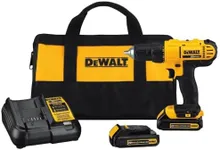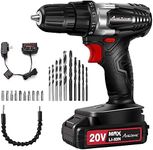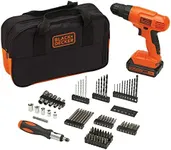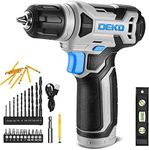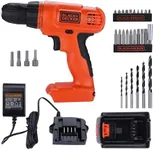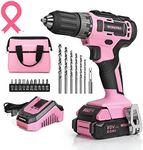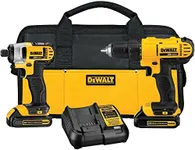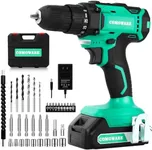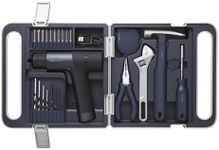Buying Guide for the Best Drill Machine For Home
Choosing the right drill machine for home use can make your DIY projects much easier and more efficient. When selecting a drill machine, it's important to consider various specifications to ensure it meets your needs. Here are some key specs to look at and how to navigate them.Power SourceDrill machines can be either corded or cordless. Corded drills are typically more powerful and don't require battery changes, making them suitable for heavy-duty tasks. Cordless drills offer more convenience and portability, ideal for light to medium tasks around the house. If you need a drill for occasional use and prefer ease of movement, a cordless drill might be the best choice.
Battery VoltageFor cordless drills, battery voltage is a key spec that determines the power of the drill. Common voltages range from 12V to 20V. Lower voltage drills (12V) are lighter and suitable for simple tasks like drilling into wood or plastic. Higher voltage drills (18V-20V) are more powerful and can handle tougher materials like metal and masonry. Choose a voltage based on the types of projects you plan to undertake.
Chuck SizeThe chuck size indicates the maximum diameter of the drill bit that the drill can hold. Common sizes are 3/8 inch and 1/2 inch. A 3/8 inch chuck is sufficient for most home projects and is lighter and easier to handle. A 1/2 inch chuck can accommodate larger bits and is better for heavy-duty tasks. Consider the types of bits you will use and the nature of your projects when choosing the chuck size.
Speed SettingsDrills can come with single or multiple speed settings. Single-speed drills are simpler and suitable for basic drilling tasks. Multi-speed drills offer more versatility, allowing you to adjust the speed for different materials and tasks. If you plan to work on a variety of projects, a drill with multiple speed settings can be more useful.
TorqueTorque refers to the twisting force of the drill. Higher torque is needed for drilling into harder materials. Adjustable torque settings allow you to control the force applied, which is useful for different tasks. For general home use, moderate torque settings are usually sufficient, but if you plan to work with tougher materials, look for a drill with higher torque.
Weight and ErgonomicsThe weight and design of the drill affect how comfortable it is to use. Lighter drills are easier to handle and reduce fatigue during extended use. Ergonomic designs with comfortable grips can make a big difference in usability. If you plan to use the drill frequently or for long periods, prioritize a model that is lightweight and has a comfortable grip.
Additional FeaturesSome drills come with extra features like built-in LED lights, keyless chucks, or impact functions. LED lights can help illuminate your work area, keyless chucks make changing bits easier, and impact functions provide extra power for drilling into tough materials. Consider which features might be beneficial for your specific needs and projects.
